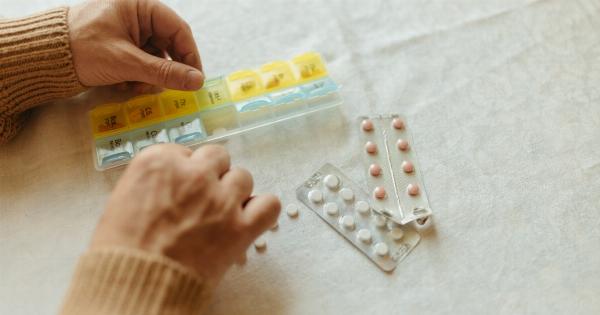In recent years, tablets have become essential gadgets for people of all ages. They offer a portable and convenient way to browse the internet, stream videos, play games, and even work on the go.
However, one common issue that tablet users face is their devices gradually getting thicker over time. In this article, we will explore the factors that contribute to this problem and provide some helpful tips to prevent it.
1. Battery degradation
One of the main reasons why your tablet may be getting thicker is battery degradation. Lithium-ion batteries, which are commonly used in tablets, gradually lose their capacity to hold a charge over time.
As a result, manufacturers tend to increase the battery size to ensure that the device can still function for a reasonable amount of time before needing a recharge.
To combat this issue, it is recommended to avoid regularly draining your tablet’s battery to 0% and charging it to 100%. Instead, aim to keep the battery level between 20% and 80% as much as possible.
Additionally, storing your tablet in a cool and dry environment can also help slow down battery degradation.
2. Hardware components
Another factor that contributes to the thickness of your tablet is the hardware components it houses. Over time, manufacturers often release newer and more powerful versions of these components.
While these upgrades provide better performance, they may require additional space, resulting in a thicker device.
However, some manufacturers manage to minimize this impact by adopting more efficient and compact components.
Before purchasing a tablet, it is worth considering reviews and specifications to determine if the model you are interested in has made any improvements in this area.
3. Build-up of dust and debris
Dust and debris accumulation can also be responsible for the increase in thickness of your tablet. The small gaps and openings around buttons, ports, and speakers can let in dust particles and other debris, which gradually build up over time.
This can affect the functionality of your device and potentially lead to thicker edges.
To mitigate this issue, regularly clean your tablet with a soft cloth, especially around the openings. You can also use compressed air or a soft brush to remove any stubborn debris.
Avoid using liquids directly on your tablet as it may damage the internal components.
4. Operating system updates
Operating system updates can sometimes contribute to the increased thickness of tablets. As new features and functionalities are added, the software becomes more demanding, requiring additional resources from the device’s hardware.
This can result in larger system files and increased memory allocations, ultimately impacting the overall size of the tablet.
While it is essential to keep your tablet updated for security and performance reasons, it is worth considering whether every new update is necessary.
Some older tablets may struggle to handle the latest operating system versions, leading to potential performance issues and increased thickness.
5. Protective cases and accessories
Many tablet users opt for protective cases and accessories to ensure the longevity of their devices. While these accessories offer great protection, they can also add thickness to the tablet.
Bulky cases with extra padding or built-in stands may make your tablet feel thicker than it actually is.
If you are concerned about the thickness of your tablet, consider opting for slim and lightweight protective cases or accessories that provide adequate protection without adding too much bulk.
There are various options available in the market, including sleek folio cases, clear back covers, and screen protectors that maintain the slim profile of your tablet.
6. Physical damage and wear
Physical damage and wear over time can also cause your tablet to appear thicker. Dropping the device or subjecting it to rough handling can result in misalignment of internal components or damage to the outer casing.
These issues can make your tablet feel bulkier or uneven, affecting its overall thickness.
To prevent physical damage, always handle your tablet with care and consider using tempered glass screen protectors to protect the display.
If your tablet does suffer any significant damage, it is advisable to have it repaired by professionals to ensure the internal components are correctly aligned and functioning optimally.
7. Manufacturer design choices
Lastly, it is essential to acknowledge that some tablets are intentionally designed to be thicker by the manufacturers.
The decision to increase thickness could be driven by various factors such as accommodating larger batteries for extended battery life or incorporating additional cooling mechanisms to handle more powerful processors.
When purchasing a tablet, it is crucial to consider your priorities and evaluate whether a thinner design is more important to you than other features such as battery life, processing power, or connectivity options.
Remember that thicker tablets do not necessarily mean inferior performance or functionality.
In conclusion, several factors can contribute to your tablet getting thicker over time.
Battery degradation, hardware upgrades, dust accumulation, operating system updates, accessories, physical damage, and manufacturer design choices all play a role in this phenomenon. By understanding these factors and taking appropriate precautions, you can minimize the impact and maintain your tablet’s slim profile for longer.































